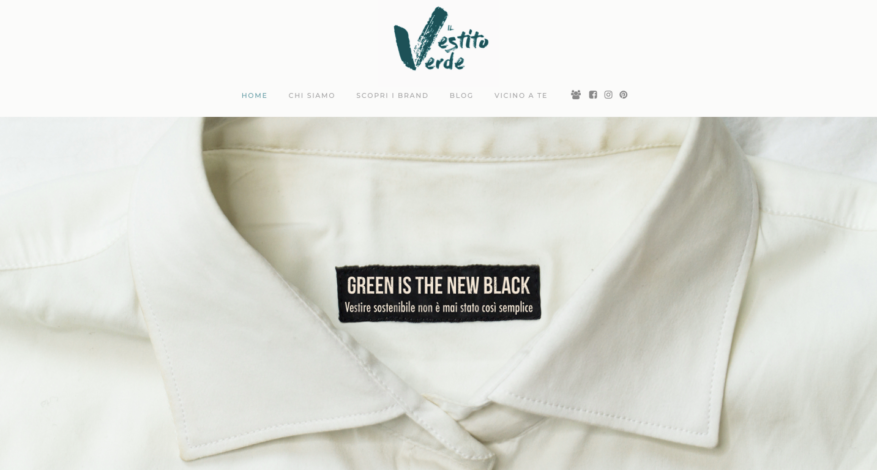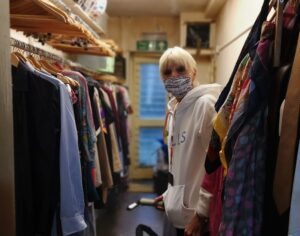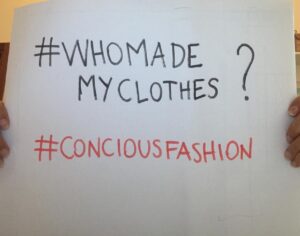YOUTH FOR THE PLANET: FRANCESCA VS. FAST FASHION
Over the last few years, the world has finally started a discussion over the environmental impact of human activities. As it seems to be a matter of time in order to save our planet, it is a topic especially dear to young people who clearly demonstrated to be willing to take action.
 Francesca Boni is one of them. Italian student and sustainability and ethical-fashion enthusiast, in 2017 she established Il Vestito Verde, a Facebook community which she turned also into a website. Both FB community and website – today have more than 24,000 users – have the aim of sharing information and advice on how to buy consciously. The website contains a rich, handy, and easy-to-use database, a map of actual sustainable fashion shops, and an informative blog that will help the readers find their way around and the perfect alternatives to suit all tastes and budgets.
Francesca Boni is one of them. Italian student and sustainability and ethical-fashion enthusiast, in 2017 she established Il Vestito Verde, a Facebook community which she turned also into a website. Both FB community and website – today have more than 24,000 users – have the aim of sharing information and advice on how to buy consciously. The website contains a rich, handy, and easy-to-use database, a map of actual sustainable fashion shops, and an informative blog that will help the readers find their way around and the perfect alternatives to suit all tastes and budgets.
Let’s hear what Francesca says about this project and the difficult relationship between fashion and sustainability.
When and how did you come up with the idea of Il Vestito Verde?
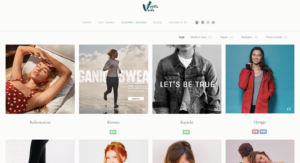 It was a necessity that came up after watching “The true cost”, a documentary about how the fashion industry is polluting the planet and violating human rights. I was extremely shocked because I wasn’t aware of this, and I knew the majority of people weren’t. I started thinking of how I could contribute to improving it and started doing some research. I realised that the best thing was to gather people knowing about the topic together so they could exchange their ideas. This is why I created the Facebook group, which I was then suggested to turn into a website in order to spread and provide the information more easily. It was created in April 2019 and slightly modified over time to make it more complete, involve more people, allow the users to personalise their research, and monetise it – we now sell advertising on the platform. I think this website succeeds in showing people that everyone can afford sustainable fashion (Think of secondhand shopping!) and in educating many consumers, thanks to our blog.
It was a necessity that came up after watching “The true cost”, a documentary about how the fashion industry is polluting the planet and violating human rights. I was extremely shocked because I wasn’t aware of this, and I knew the majority of people weren’t. I started thinking of how I could contribute to improving it and started doing some research. I realised that the best thing was to gather people knowing about the topic together so they could exchange their ideas. This is why I created the Facebook group, which I was then suggested to turn into a website in order to spread and provide the information more easily. It was created in April 2019 and slightly modified over time to make it more complete, involve more people, allow the users to personalise their research, and monetise it – we now sell advertising on the platform. I think this website succeeds in showing people that everyone can afford sustainable fashion (Think of secondhand shopping!) and in educating many consumers, thanks to our blog.
About advertising, I have a question. You managed to turn your passion into a real project, but I am sure it wasn’t easy. What difficulties did you face in order to “keep it clean”?
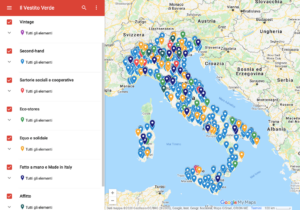 Well, on the one hand, as we are a niche business, known to be authentic and true to our values, companies are willing to pay more. On the other, we are very selective when we choose the companies we work with, which makes it competitive to become my client. In fact, I ask them to fill a very detailed form to know what are all their ethical and sustainable practices. I do not expect anyone to be perfect, I just expect them to be as much interested in being a driver of change as Il Vestito Verde is. Only around two-thirds of them “pass the test”, which means less income, but it doesn’t matter because we don’t want to lose our customers’ trust. However, I want to clarify that we are not a certification agency. What we do through the platform is find cool brands and share them, give shopping advice, with the aim of reducing harmful shopping.
Well, on the one hand, as we are a niche business, known to be authentic and true to our values, companies are willing to pay more. On the other, we are very selective when we choose the companies we work with, which makes it competitive to become my client. In fact, I ask them to fill a very detailed form to know what are all their ethical and sustainable practices. I do not expect anyone to be perfect, I just expect them to be as much interested in being a driver of change as Il Vestito Verde is. Only around two-thirds of them “pass the test”, which means less income, but it doesn’t matter because we don’t want to lose our customers’ trust. However, I want to clarify that we are not a certification agency. What we do through the platform is find cool brands and share them, give shopping advice, with the aim of reducing harmful shopping.
Considering the amount of easily accessible information about sustainability, do you think we can talk about a shared “green awareness”? Or is the road to real awareness still long?
Unfortunately, I think that, as far as there are people, like you and me, that care about sustainability, many other do not. This “community of aware people” is growing and helping spreading knowledge, but it is still not enough. There are many reasons why conscious and sustainable fashion hasn’t taken off yet but it is, first of all, a matter of budget. Many people cannot afford to spend more. Furthermore, the responsibility is not only of the consumers but also – maybe more – of the policymakers, who should be advocating for a more sustainable fashion sector.
Indeed, I feel like people are mainly concerned about the cost of sustainable fashion. Do you think this is an actual concern or only an excuse?
What we often don’t realise is that it is those people who can afford to choose what to buy that should bring about the change. Consumers with lower incomes are already more sustainable because they buy less, reuse more, and, actually, come up with many waste remedies. On the contrary, people with higher incomes tend to privilege quantity over quality. Their overconsumption and hectic trends are the problems. Also, inclusivity is really important here. If we did not also include those people who buy fast fashion because they have no choice, this would be a classist and intolerant movement.
As nowadays there are so many, also fast fashion, brands following the “green trend”, how can consumers distinguish greenwashing from sustainability?
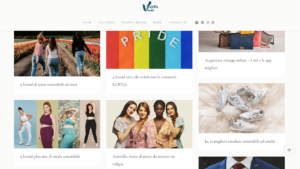 Thinking critically and learning how business models work. If a brand pushes consumers to buy new things because what they already own is not good anymore, it is not sustainable, even if it uses sustainable fabric. However, also greenwashing can have a positive effect. As a well-known Swedish brand decided to produce a very big amount of organic cotton t-shirts, the price of this fabric decreased worldwide, allowing also small sustainable businesses to buy it at a lower price and sell their products at a lower cost and to more people. One more thing to consider is that people do not research deeply enough. Now, if you google “green fashion”, the first results will be about the fast fashion brands’ “green” collections and most people are very likely to click on these first links, thus ending up buying from fast fashion websites anyway.
Thinking critically and learning how business models work. If a brand pushes consumers to buy new things because what they already own is not good anymore, it is not sustainable, even if it uses sustainable fabric. However, also greenwashing can have a positive effect. As a well-known Swedish brand decided to produce a very big amount of organic cotton t-shirts, the price of this fabric decreased worldwide, allowing also small sustainable businesses to buy it at a lower price and sell their products at a lower cost and to more people. One more thing to consider is that people do not research deeply enough. Now, if you google “green fashion”, the first results will be about the fast fashion brands’ “green” collections and most people are very likely to click on these first links, thus ending up buying from fast fashion websites anyway.
You are in contact with several sustainable brands. Has any of them undergone a structural change to become green or were they born green?
I think that, currently, you are sustainable if you were born so – Patagonia, for example. Shifting is still not possible as it takes a lot of time, mainly because of the duration of the contracts with suppliers, big structural changes in the factory in itself, and in the relationship with the employees. It would also require big investments, which many brands cannot afford to make right now. And this is why it is so important to support sustainable brands.
Now, what about the future? Do you have any new projects?
As far as the platform is concerned, we are building more comprehensive filters – including certifications, carbon offset, and ethics. It is still growing anyway, which is good! After university, I would really like this to be my full-time job, even if being an entrepreneur is quite scary, also considering the poor support you receive from the Italian government. We would like to make an app, which however requires more resources, and find a new hosting that has to be carbon-neutral – digital pollution is a big issue too!. We have been searching for a while but have not found one yet. We will see what the future holds for us!

